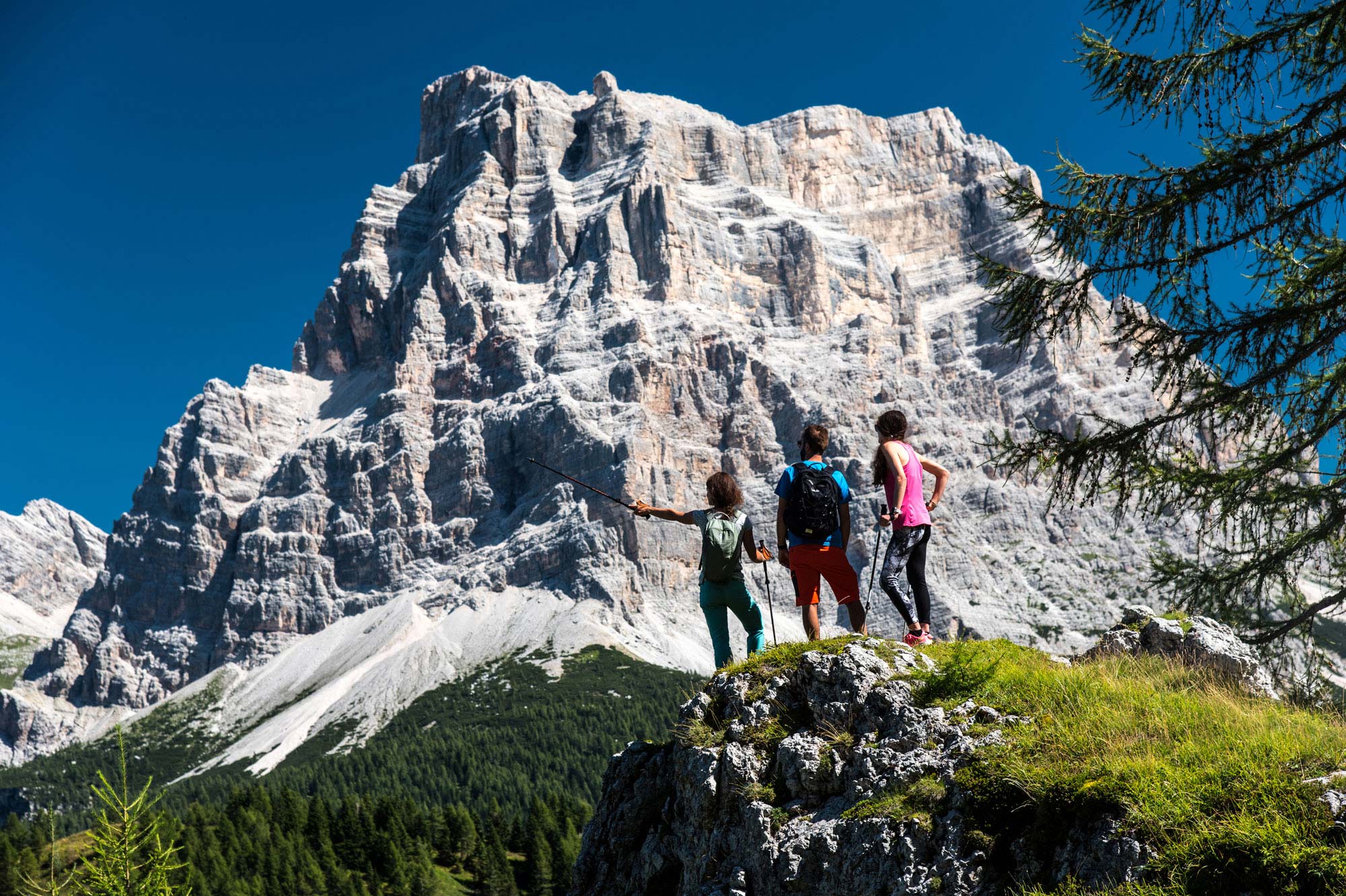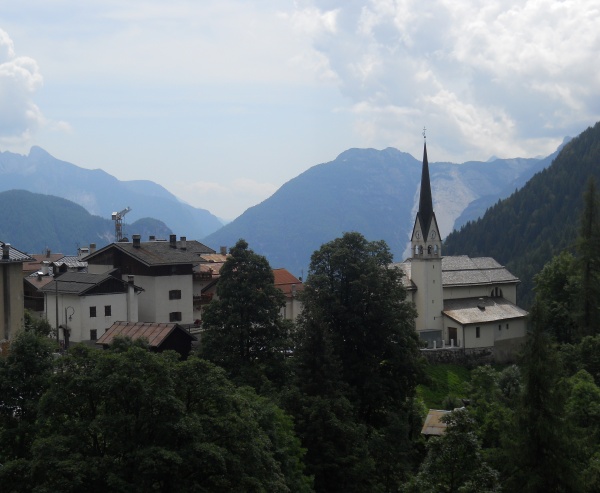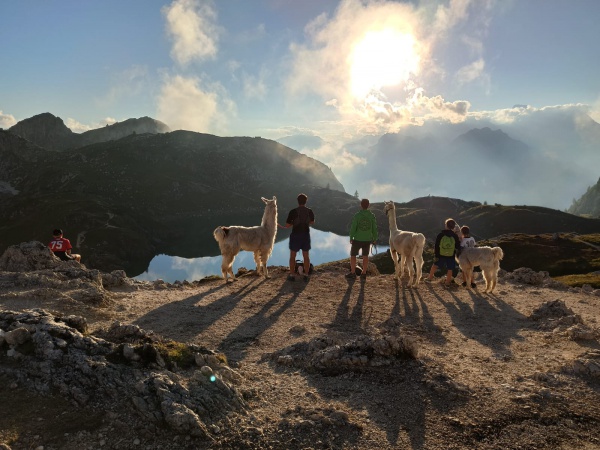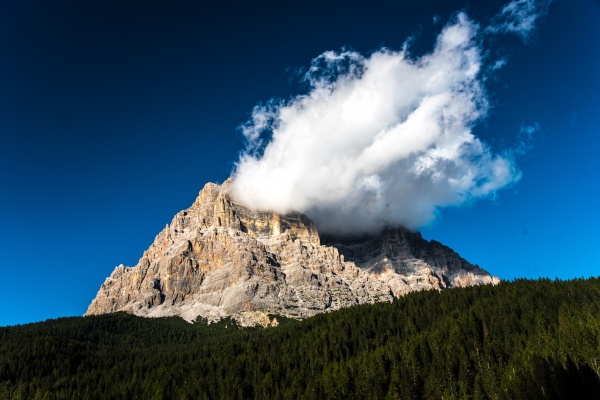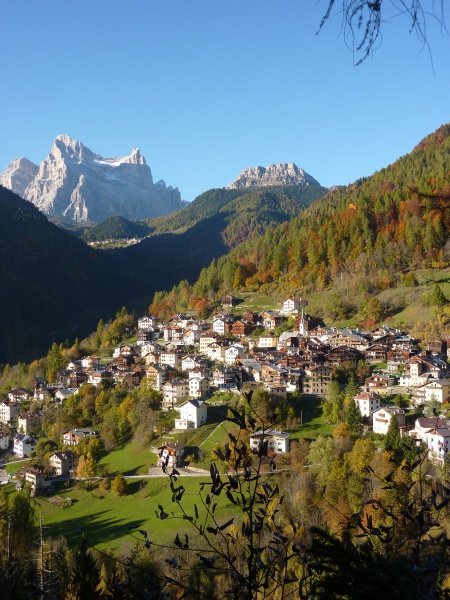Each little village in the Val di Zoldo has a fascinating story to tell, which remains virtually intact in its traditional architectures, historical buildings and churches, authentic treasure chests of art. Let’s take a look at some of them and their distinctive features:
In Brusadaz, you can see the old Costa mill, which may have been among those mentioned in a survey from 1693. Outside of the village are the remains of the old Da Dòf and San Pellegrino mines. The rural settlement of Brusadaz maintains its traditional beauty to this day.
Well worth a visit in Coi is Casa Rizzardini, a striking building that stands out among the more simple, rural constructions; one of the frescoes on the outside dates to 1713. Along the road that runs from Coi to Mareson, you’ll find the two Rizzardini mills, dating to earlier than 1634, and which were still working in 1946. Also interesting is the Piva mill, with its large wooden wheel, in operation from 1948 until the 1970s. Coi, at an impressive altitude of about 1500 metres, is not only one of the highest, but also one of the most attractive and appealing of the Val di Zoldo, surrounded by incredible views of Monte Pelmo and the Civetta chain. Perfectly conserved as it once looked, it allows the visitor to take a trip right into the past, on a stroll through the little lanes lined by centuries-old dwellings and wooden tabiai, or haysheds. This is a dream of a place for photographers, as well as nature and architecture lovers.
The most important of the buildings in Fusine is undoubtedly the Church of San Nicolò, mentioned for the first time in a document from 1570 and rebuilt in 1909; frescoed on the outside, inside it contains a wooden crucifix by Valentino Panciera Besarel, and an organ that has no equal anywhere in the world, made throughout from wooden pipes crated locally in the 19th century. Also worth visiting is the “old” part of the village, as you head down towards Soramaé, a quiet little hamlet that has remained unchanged over the years.
In Pianaz, you can admire the beautiful frescoes of Casa Colussi-David (1662, Madonna with Sant'Antonio and Sant'Osvaldo) and Casa Colussi-Manéta (the family tree of the owners, with San Rocco and Sant'Antonio, the Crucifixion and the Madonna with the Baby Jesus and Saints).
In Mareson, a delightful little village at the foot of the Civetta, you can see the Church of San Valentino (1482), inside which is an altar of the Holy Cross by Andrea Brustolon, while the exterior is frescoed with an image of the patron saint.
Pecol is a little tourist resort, the closest to the Ski Civetta slopes. With its centuries-old tabiai and the new, recently restructured homes, Pecol offers some marvellous views, with the beauty of the local architecture blending with the magnificent landscape of Monte Civetta, which acts as a backdrop to the village with Monte Pelmo.
The Goima Valley lies along the 347 road of the Duran Pass, at the foot of the Moiazza (Civetta chain). Off the main road, if you venture into little hamlets such as Chiesa and Molin, you’ll find the ancient settlements of the valley, dotted with tabiai, wooden homes and wide-open pastures. The Church of San Tiziano in Chiesa is one of the most beautiful in the Val di Zoldo, and at Bivio scuole, you’ll find the Goima Valley Ethnographical Museum of Trades, Traditions and Customs, dedicated to preserving, studying and promoting the historical, linguistic and economic heritage and folklore of the local area. The museum focuses on traditional trades and activities such as agriculture, metalworking, carpentry and fabric making. It features a large collection of working tools, as well as a reconstruction of the typical interior of the houses of the past in Zoldo.
Zoppè is a village in the Cadore area, in a splendid location at an altitude of 1426 m, on the slopes of the Pelmo, near Col Duro, which separates Zoppè from the Cibiana Pass area. It is believed that the trailblazers for the Zoldo ice cream making tradition came from Zoppè, where they had learned the art from people from the Cadore. These folk brought some of the Zoldani to work in Vienna, where they learned the tricks of the trade so effectively that they were then able to set up shop for themselves. By the end of the 19th century, there were already dozens of ice cream carts belonging to people from the Cadore and Zoldo areas to be seen in the streets of Vienna. The Church of Sant'Anna dates back to 1530; it was extended in 1732 and consecrated five years later. Inside is a marvellous painting of the Madonna and Child with Sant’Anna, San Paolo and San Girolamo. The altarpiece is attributed to Titian or a painter from his workshop, and on several occasions, the people of Zoppè had to defend it from the sack and requisition of invading armies. The church also contains works in wood by De Lotto, Angelo Gamba Zampol and Dante Moro. Zoppè has close links with two great artists of the 20th century, Masi Simonetti and Fiorenzo Tomea. Although their painting styles were very different, both were irresistibly drawn to and inspired by their native landscape of Zoppè, Monte Pelmo and the surrounding area.
Sitting on a gentle slope facing south, at an altitude of 1000 metres, the little village of Fornesighe enjoys splendid views of the Tamer San Sebastiano and Spiz di Mezzodì, northern outcrops of the Dolomiti Bellunesi National Park. As you walk through the little streets that run between the rural buildings in this hamlet of the municipality of the Val di Zoldo, you’ll feel as if you’ve taken a trip into the past. Fornesighe boasts some magnificently preserved architectural elements of days gone by, with old houses built in wood and stone that have miraculously never been destroyed or damaged by fire over the years, and have maintained their original appearance.
Forno is located at an altitude of 848 m, along the flow of the Maè torrent, and is a pleasant village, popular with tourists. One of its main attractions is the Nail Museum, the purpose of which is to preserve the history and culture of the ancient local tradition of fusing and working with iron. From the actual mining activity to the functioning of the furnace, forging activity and the production of nails and other items, the fascinating visitor route features a wealth of documentation and incorporates typical aspects of the local dialect. The museum is housed in the centuries-old Palazzo del Capitano.
Pieve is home to the parish church of San Floriano, the church of this area of the diocese, dating back to 1487. Inside is the magnificent altar of the souls, sculpted by Andrea Brustolon (1662 – 1732), known as the Michelangelo of wood. The 47-metre bell tower has a pinnacle covered in larch wood shingles. Pieve is also popular for its splendid raised position that offers magnificent views of the Mezzodì group.
In the little village of Astragal, you can still see the home of the Panciera Besarel family of artists whose name brought renown to the Val di Zoldo. Among the most famous was the great Valentino Panciera Besarel (1829 – 1902), son of the wood carver Giovanni Battista (1801 – 1873), and father of Caterina (1867 – 1947).
Pralongo, perched on a plain of glacial origin on the eastern slopes of the Tamer - San Sebastiano group, historically belonged to the Regola di Sot i Zei, made up of the villages of Forno, Sottolerive, Pralongo and Colcerver. This peaceful, sunny place is a paradise in both summer and winter.
Colcerver is undoubtedly one of the most delightful places in the Val di Zoldo. It can be reached by a very narrow road, and is closed to vehicular traffic. The hamlet currently has just one inhabitant who lives here all year round, but in summer it comes to life with the arrival of tourists and people who come here to spend their holidays. This really is a place like no other, located in an extraordinarily beautiful position, the ideal place to relax and take a complete break from the chaos of city life.
Among the attractions of Dont, the village that links the upper part of the valley with the Forno area, is the Church of Santa Caterina and the beautiful little pedestrianised centre. Until the 19th century, it was one of the most active metalworking locations, and documents from the 14th century testify to the existence in Dont of a smelting furnace that remained active until the mid-18th century.









